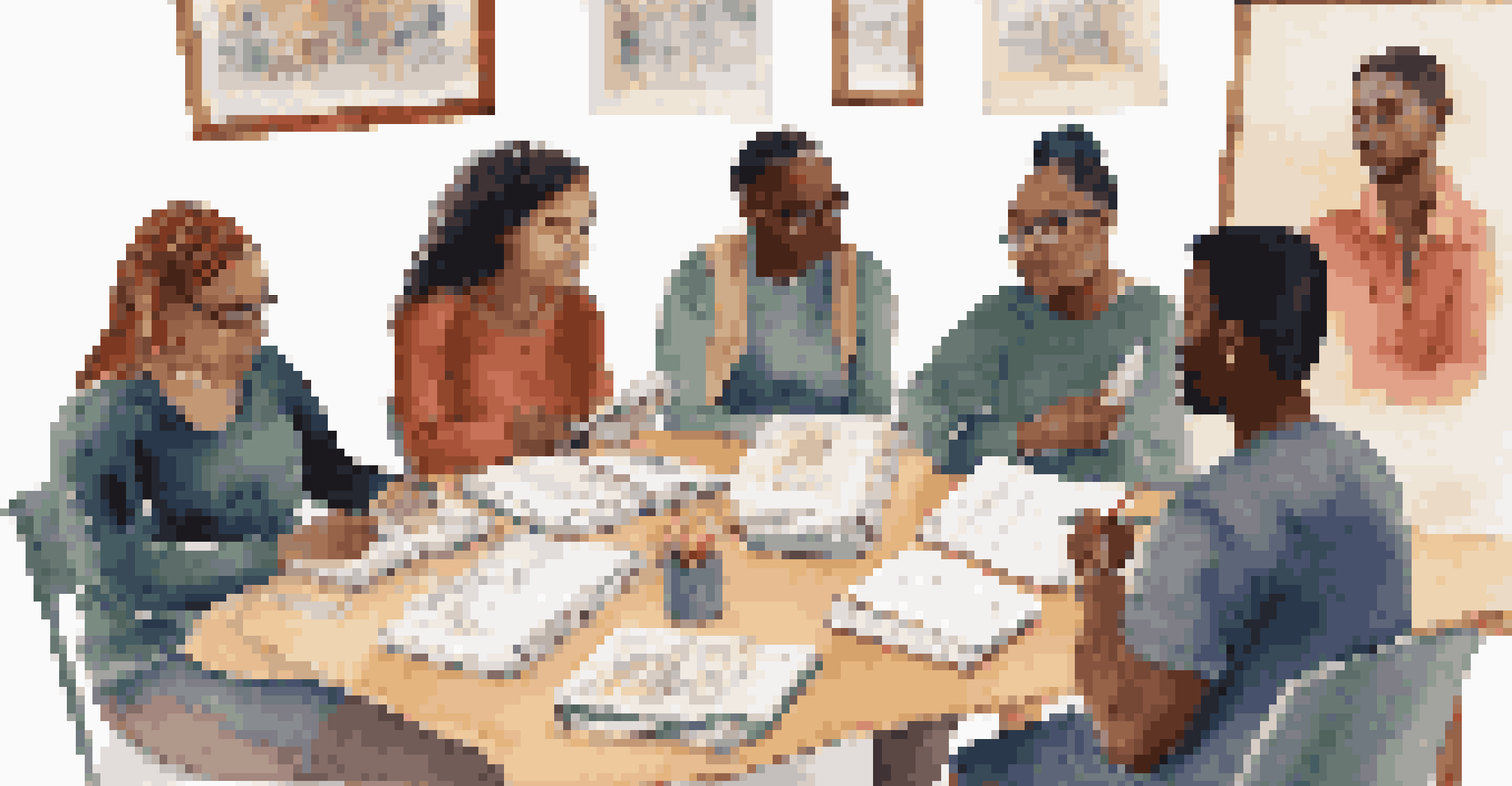Creative Writing as a Tool for Emotional Awareness

Understanding Emotional Awareness Through Writing
Emotional awareness is the ability to recognize and understand our feelings. It’s like shining a flashlight in a dark room—suddenly, things become clearer. Creative writing can serve as a powerful tool to illuminate these emotions, helping us uncover thoughts that might otherwise remain hidden.
Writing is a way of talking without being interrupted.
When we write creatively, we engage with our feelings on a deeper level. This process allows us to explore our emotions, which can be cathartic and revealing. By putting pen to paper, we create a space to confront our feelings, leading to greater self-awareness.
Through the act of storytelling, whether fiction or poetry, we can articulate our experiences. This articulation not only helps in understanding ourselves but also fosters empathy towards others. Just as characters in a story experience growth, so too can we through our writing.
The Therapeutic Benefits of Creative Writing
Creative writing can be a form of therapy, providing a safe outlet for expressing feelings. Think of it as a personal diary where you’re free to explore your inner world without judgment. This practice can reduce stress and anxiety by allowing us to process our emotions.

Many people find that writing about their experiences helps them gain perspective. For instance, crafting a narrative about a challenging event can transform it from a source of pain into a tale of resilience. This shift in view can be incredibly empowering.
Writing Enhances Emotional Awareness
Creative writing serves as a tool to explore and articulate our emotions, leading to greater self-awareness.
Moreover, creative writing fosters mindfulness. When we immerse ourselves in our writing, we become present with our emotions, acknowledging them without fear. This mindfulness practice can lead to improved emotional regulation in our daily lives.
Finding Your Voice in Creative Writing
Everyone has a unique voice, and creative writing helps us discover and refine it. This personal expression is crucial for emotional awareness, as it allows us to articulate feelings that might be difficult to express verbally. It’s like finding the right key for a lock that opens up our innermost thoughts.
The act of writing is the act of making yourself visible.
As we write, we experiment with different styles and tones, which can reveal much about our emotional state. A dark poem might reflect inner turmoil, while a light-hearted story could signify contentment. By recognizing these patterns, we gain insights into our emotional landscape.
Sharing our writing, whether in a workshop or with friends, can further enhance this discovery. Feedback from others can provide new perspectives on our emotional expressions, enriching our understanding of ourselves and our experiences.
Using Prompts to Explore Emotions Deeply
Writing prompts can serve as a powerful catalyst for emotional exploration. For example, prompts like 'Describe a time you felt truly happy' or 'Write a letter to your past self' encourage us to dive into specific emotions. These targeted exercises help structure our thoughts and feelings.
Engaging with prompts can lead to unexpected discoveries about our emotions and experiences. They can surface memories we may have buried or highlight feelings we’ve been avoiding. This can be a profound way to confront and process our emotional history.
Therapeutic Benefits of Writing
Engaging in creative writing can provide a safe outlet for processing emotions, reducing stress and fostering resilience.
Additionally, prompts can be tailored to explore a range of feelings—joy, sadness, anger, or fear. By systematically addressing these emotions, we can cultivate a deeper emotional awareness over time, enhancing our ability to navigate challenges in our lives.
The Role of Metaphors in Understanding Emotions
Metaphors can be a powerful tool in creative writing, helping us articulate complex emotions. By comparing feelings to tangible objects or experiences, we can gain clarity on what we’re feeling. For instance, describing grief as 'a heavy blanket' can help us understand its weight and impact.
Using metaphors not only enriches our writing but also allows us to explore emotions from different angles. This creative distance can make it easier to confront difficult feelings. It’s like viewing a painting from afar, allowing us to appreciate the whole picture.
Moreover, metaphors can foster connections with readers. When others resonate with our metaphors, it creates a shared understanding of emotions, bridging the gap between individual experiences. This connection can be comforting and affirming.
Creative Writing as a Path to Emotional Resilience
Engaging in creative writing regularly can build emotional resilience. By continually exploring our feelings through writing, we develop a toolkit for understanding and managing emotions. It’s like exercising a muscle; the more we practice, the stronger we become.
This resilience allows us to cope better with life’s challenges. When we encounter difficulties, the skills we’ve honed through writing can help us process and navigate our emotions. We learn to articulate our feelings instead of bottling them up, which can lead to healthier emotional responses.
Community Through Shared Writing
Participating in writing groups fosters a sense of community, validating our emotional experiences and enhancing understanding.
Furthermore, the stories we write can serve as reminders of our growth. Looking back at previous pieces can illustrate how far we’ve come emotionally, reinforcing our resilience. It’s a powerful testament to the transformative power of creative writing.
Building a Community Through Shared Writing Experiences
Creative writing can connect us with others who share similar emotional journeys. Joining writing groups or workshops fosters a sense of community, providing a supportive environment to explore emotions. This connection can be incredibly validating and encouraging.
Sharing our stories not only helps us process our feelings but also allows others to relate. When someone reads your piece and recognizes their own experiences within it, it creates a bond. This shared understanding can alleviate feelings of isolation.

Moreover, feedback from fellow writers can enhance our emotional awareness. Different perspectives can shed light on emotions we might not fully comprehend. This collective exploration can deepen our understanding of ourselves and each other.